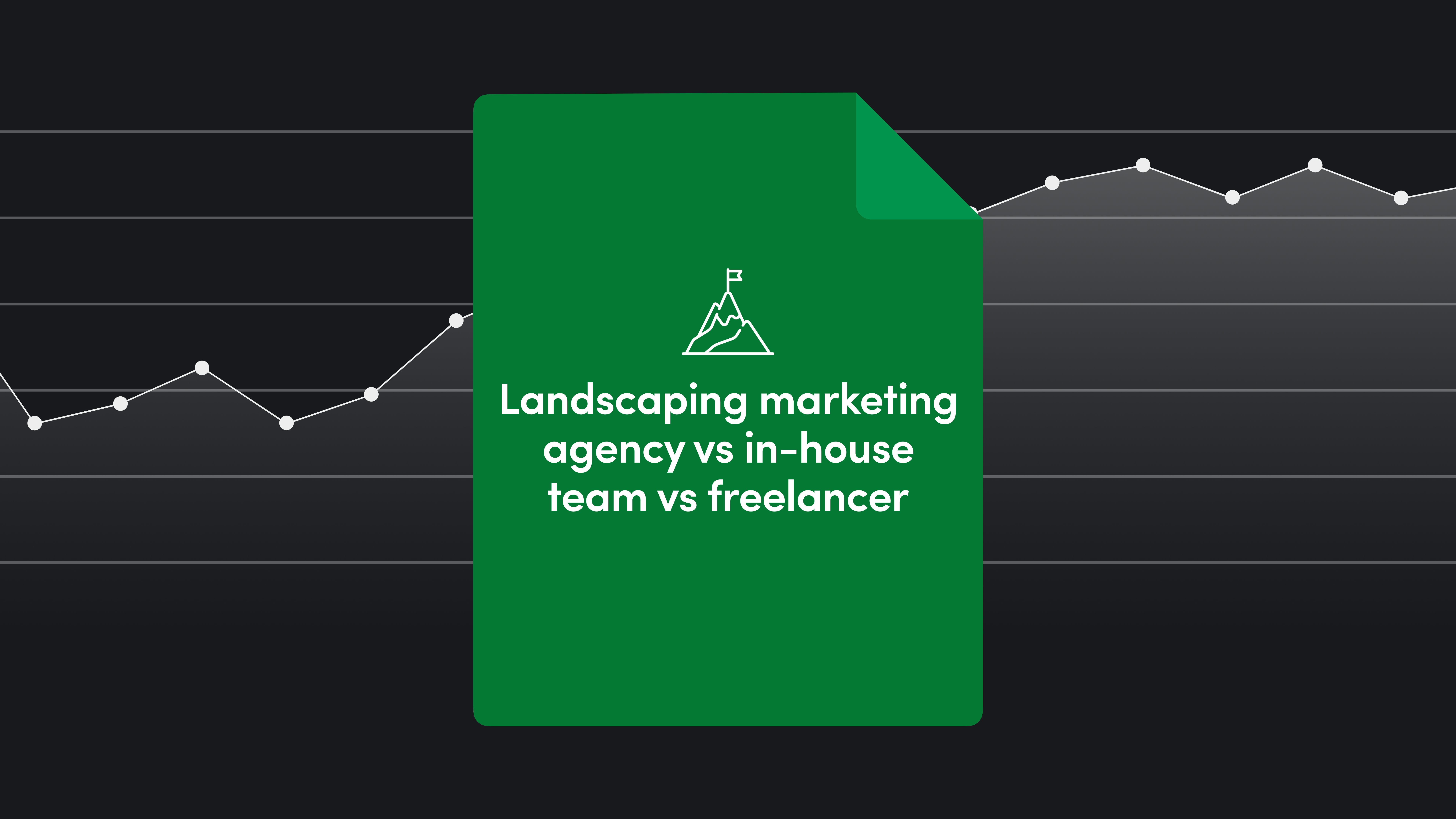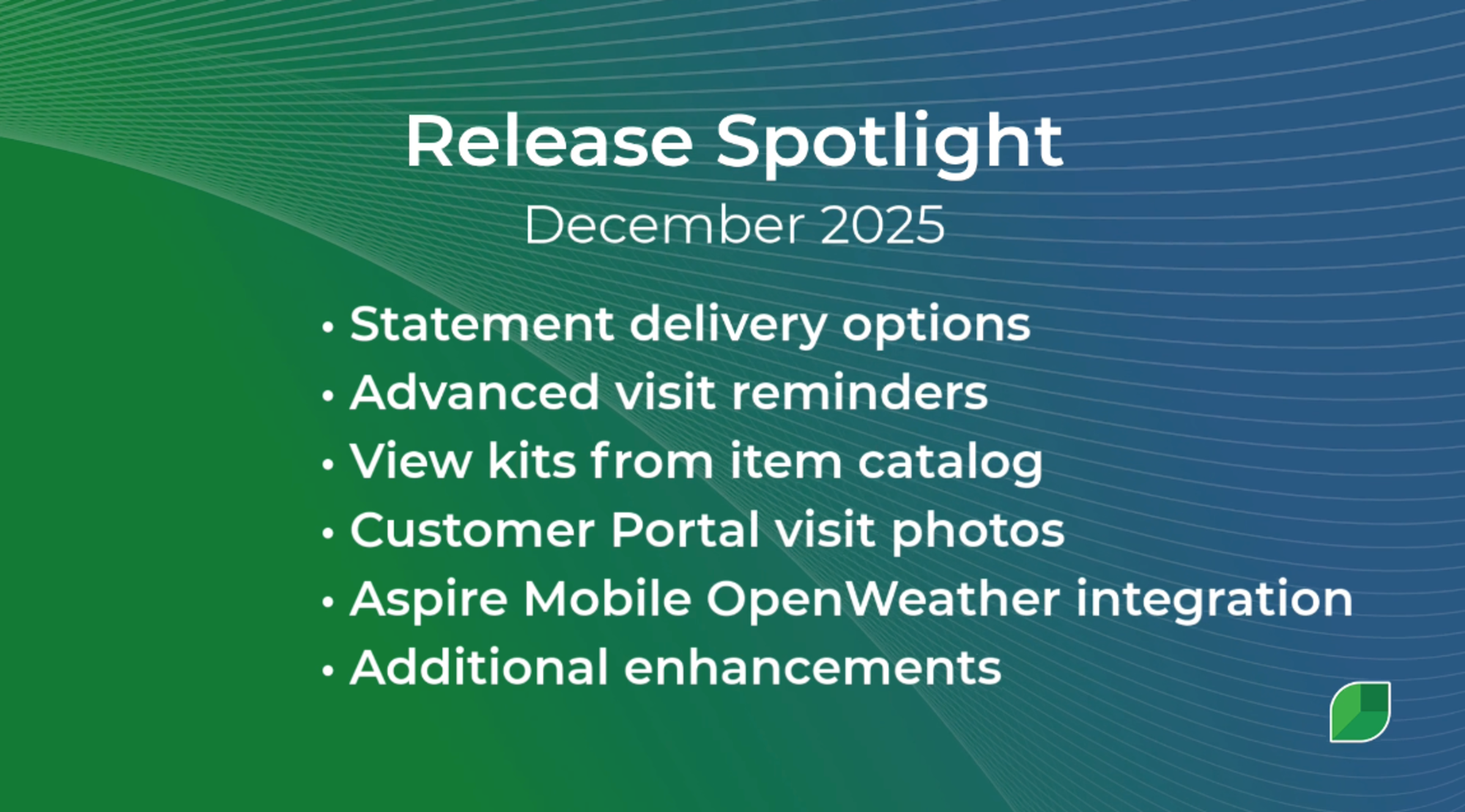Table of Contents
Table of Contents
- What is the average profit margin for a landscaping business?
- How much are monthly landscaping costs?
- What are some profitable landscaping services?
- How should landscapers price jobs to meet average profit margins?
- Improve your landscaping profit margins with Aspire
- Give your landscape and lawn care company the tools to achieve limitless growth with dynamic profit margins
Profit margins. A defining metric in the world of landscaping businesses. But what are they really?
Your profits are the gap between:
Your costs
Earned revenue
Your margins reveal how much money remains after you pay your financial liabilities. In landscaping, they show:
The value of your contracts
Your room for growth
The success of your company
If your margins are too slim, you’re playing a risky game of struggling to stay afloat while barely breaking even. Although it may feel like no margin can be too broad, sometimes that can signal overcharging for your work.
Most landscapers are eager to grow their business, but greater profitability can also allow you to:
Pay down company debt
Purchase more equipment
Pay more competitive wages
Reinvest in your company
Whatever your aim, it’s essential to understand what a good margin is for your business and how to build on it.
What is the average profit margin for a landscaping business?
There is no industry-wide average for the landscaping industry, but typical margins depend on your market, verticals, and company age. For example:
→ 15% can be enough profit for an early-stage landscaping business to grow.
→ 45% is typical for growing landscaping companies advancing to the next stage of their business goals.
→ 15 to 20% is ideal for a residentially focused lawn mowing service business.
→ 10 to 15% is more realistic for the commercial property vertical.
The operational variables of your landscape and lawn care business define your margins.
When you want to know with confidence that your landscaping jobs are profitable, you have to look at every detail of your operations. Consider the following:
Are material markups consistent when supplier prices fluctuate?
Does pricing include hidden overhead costs?
Are your estimates consistent and accurate?
How current and trustworthy is the data informing budgets?
Are end-of-month reports complete and comprehensive?
Every business model is different. The bigger your company grows, the harder it is to rely on slim margins since the room for error is increasingly smaller.
→ It’s more important to understand how your margins should grow with your company. A stable profit metric won’t equal sustainable growth.
Keep in mind the unexpected challenges of the green industry.
Consider why landscaping companies lose money throughout the year and how they would impact your profitability.
→ If your workforce suddenly decreases due to resignations, how long can your company keep afloat?
→ If you lose all your equipment in an accident, how much will it affect your business to buy new ones?
Your margins need to account for these possible dents in your profit to keep your small business from immediately sinking when tragedy hits.
So what’s the trick to determining which margin percentage works for your business goals? It requires accounting for a few things.
How much are monthly landscaping costs?
Your costs are half the equation of determining your margins. Obviously, you need your services to bring in more total revenue than the costs of completing them. But you can’t go setting your markup to be double that of the costs from the offset, or else your competitors will undersell you.
Look at your direct expenses as just a starting point. They’ll likely include the following:
Labor costs from back-office staff to crew members paid at hourly rates
Equipment maintenance, repair, and replacement
Cost of materials and supplies
Subcontracts
And more
But costs should account for every aspect of running your business, not just production. You’ll need to quantify your indirect overhead costs as well.
Liability insurance
Marketing and advertising
Sales and business development expenses
Professional development
The average cost for a landscaping business startup is generally around $50,000 for the first year, but this can change based on your region or focus of services.
To bring in a good starting margin, a starting business needs to bring in $55,000 to $65,000 annually, or over $5,000 a month.
Dynamic net profits adjust as your landscape and lawn care business goes through new growth stages.
Consider your company's growth stage as the second point of building your margins. An entrepreneur with an early-stage company should be concerned with building up to a healthy margin of 15%. However, goals change as a company becomes established in its market and focus shifts to scaling.
Your margins should grow to 20% before considering expansion or re-investment in business capabilities.
However, figuring out your costs isn’t always as simple as evaluating your cost per job or staffing.
There are nuances beyond the surface you should account for in your margins.
What are the indirect and direct costs associated with a landscaping business?
When pricing services, a comprehensive understanding of all the costs related to operations are essential to estimating landscaping jobs accurately.
Staffing: How much does it cost to support your workforce?
Back office workers
Crew teams
Contractors
Benefits
Sick days
HR resources
Hiring
Recruiting
Leadership
Labor costs: What does deploying your team to secure and complete jobs cost your business?
Transport to jobs
Pay per job for the crew
Cost of equipment usage and maintenance
Paperwork and reporting per job
Supplying materials for each job
Seasonal issues
Cost per client: How much does it cost to secure and retain your clients?
Client communications
Cost to meet with new clients and review properties
Cost of new clients versus returning clients
Supporting financing options
Legal course for missed payments
Once you can define the costs for each of these variables, you can understand how much padding you need in your margins. That extra profit will support your organization in the case of:
Sudden emergencies
Unplanned overtime on a job
Equipment upgrades
Other hits to profits
Neglecting to understand a single aspect of these costs will leave your business vulnerable to hidden barriers that prevent growth.
What are some profitable landscaping services?
The answer every new landscape business owner seeks. Your services should be specifically chosen to help your business thrive, not just mimic what you think your landscaping business needs to provide because that’s the status flow.
If you can’t tangibly support your service offerings, they shouldn’t be a part of your business.
High-earning services can be determined by:
Geographic location of the job site
Required equipment for the project
Desired customer type and vertical
Take stock of what's already available to your business.
Use these three steps to discovering high-profit services:
If you’re in an area like California where artificial grass is more desirable than real grass, consider turf care as a service. If your business resides in snowy areas, then tackle snow services. Don’t reach beyond the needs of your immediate customer base.
Consider the equipment and skills required to complete a service. Don’t just offer pool building because pools are popular in the neighborhoods you serve. Look beyond the gross profit margin to ensure you can afford the initial purchase and ongoing maintenance to extend the lifespan of your landscaping equipment.
Finally, choose an audience of potential customers on which to focus. If the scale of services you offer is modest, consider targeting homeowners. While more sporadic in pace, residential landscaping jobs may be more tangible to your current business standing. Commercial services may allow for more significant margins due to the scale but consider the type of staffing and equipment you would need to manage a weekly schedule of jobs that size.
Once you complete this evaluation, certain services should naturally stand out as a good fit for your business.
Start with those, and wait for your margins to increase steadily. When you’re operating at goal profits, it’s time to revise your business plan and expand your services again.
How should landscapers price jobs to meet average profit margins?
Once you select services, it’s time to figure out the wonderful world of pricing–the second half of establishing your margins. Just like costs, your rates need to account for nuance.
Your pricing formula should include:
Direct costs
Overhead costs
Profit
But the final cost of your service should also reflect:
Industry averages
Market research
Competitor rates
Once you understand these aspects, you can build out a model for what to charge customers that generates five to 10% profit on every service. Some companies consider the risk of 5% margins a worthy investment if it means building a rapport with new customers.
Your rates, costs, and services are dynamic from year to year.
Another thing to consider is your road to scale your landscaping business. Remember, your starting prices aren’t permanent. Every year your costs will probably rise:
Materials
Raises for employees
Maintenance for equipment
Service expansion
If you choose low rates initially, you need a path to raise profits.
→ Maybe it means clarifying to your customers that new clients received discounted rates.
→ It could mean starting with simple lawn mowing and yard care and raising prices as you enhance service quality.
Either way, you need to be able to sustain customers as your rates build.
Improve your landscaping profit margins with Aspire
When it comes to increasing margins at every growth stage, you need to do more than just increase rates or decrease costs.
Improving your bottom line is about being strategic and flexible. The ability to consistently monitor job performance enables you to make the right business decisions at the right time.
→ This can’t be done without a system that provides live reporting throughout your company.
Give your landscape and lawn care company the tools to achieve limitless growth with dynamic profit margins
Increasing profits is about enhancing your management capabilities. To do this, you need to invest in the right resources. Aspire’s cloud-based landscape business software provides all the tools you need to evaluate and drive increases in cash flow and an improved bottom line:
Aspire provides a live data feed on a comprehensive dashboard that eliminates the traditional need for end-of-month reporting and allows you to assess profits at any given moment.
Users become managers of their profits by identifying and exploiting opportunities for operational improvement.
Want to experience software designed to help landscapers achieve growth at twice the industry rate? Schedule a landscaping business software demonstration with Aspire and see how you can take your profits to the next level.










